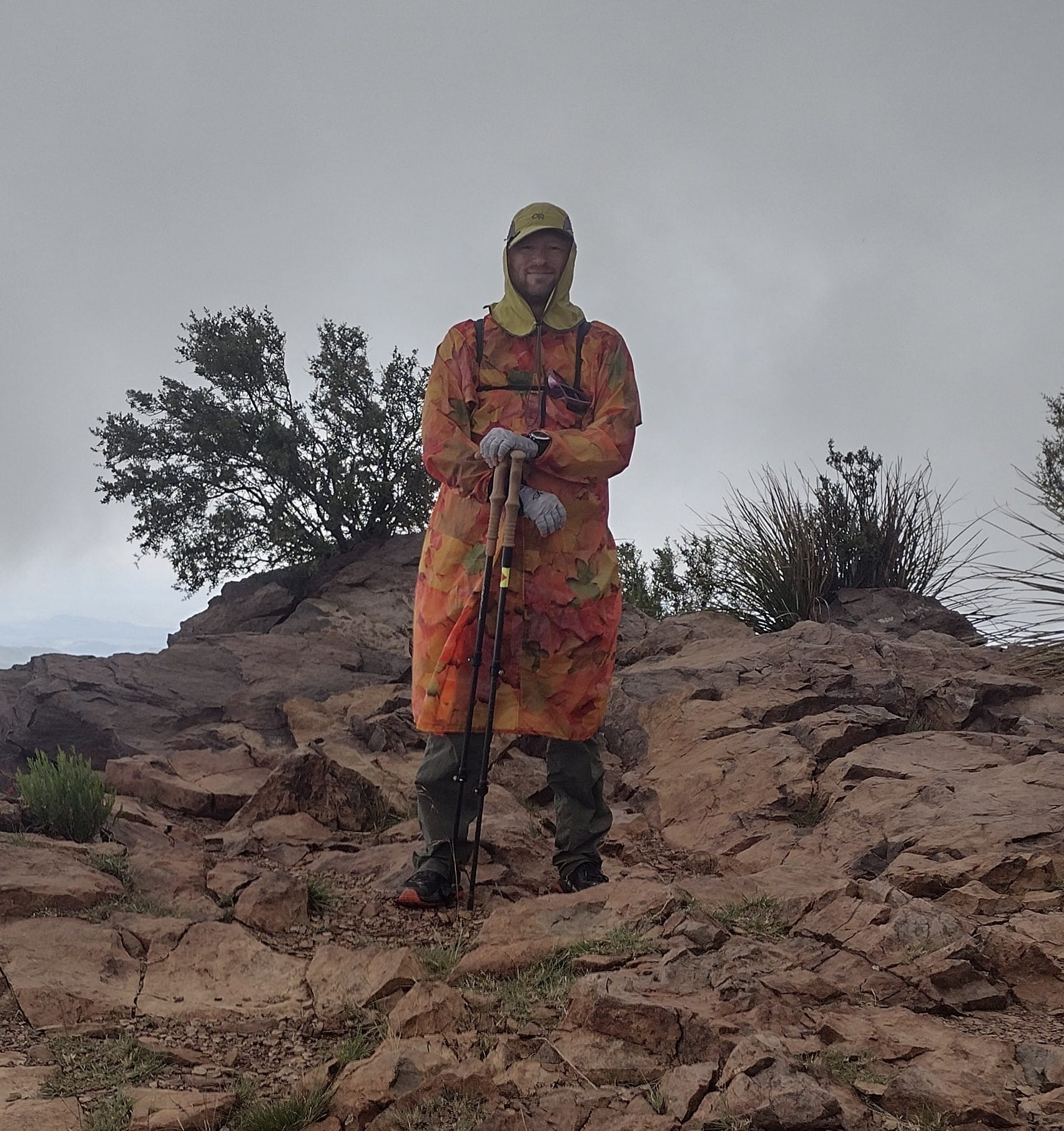UL Raingear
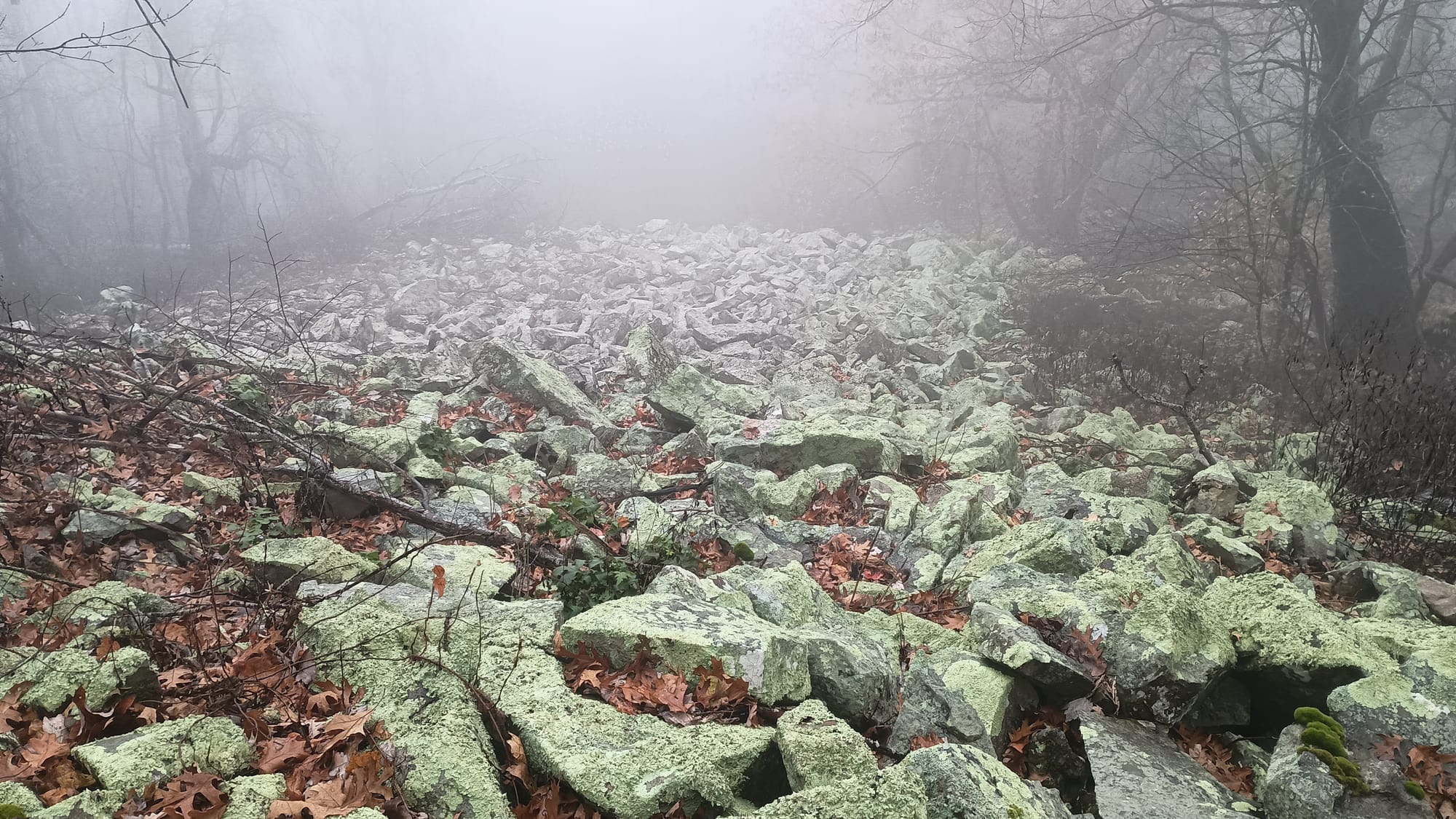
There are two camps when it comes to rain gear: breathable membranes like Gore-tex, and impermeable membranes, like Dyneema Composit Fabric (DCF), silicone impregnated nylon or polyester (silnylon, silpoly), polyurethane coated materials (PU), and even plastic films. There are pros and cons to each, and both require knowledge to apply effectively. This article is going to be dealing exclusively with impermeable membranes.
Ultralight raingear takes many forms. The default choice of many is the Frogg Toggs UL series. ~ $30 for a 169 gram (~ 6 ounce) jacket is a steal. Sure, they're not the most durable, but many an Appalachian Trail hiker has reported they hold up pretty well. (And for the inevitable degradation, duct tape apparently works well for repairs.) However, the Frogg Toggs pants are notoriously terrible: ill fitting, fragile, and hot. Pairing a Frogg Toggs UL jacket with something else for the lower body is a common UL/budget friendly option.
My recommendation: buy or MYOG yourself a rain kilt. They are dirt-simple, can double as a small ground cloth, and only weigh 50-75 grams. (I made mine out of 0.93 OSY Membrane Silpoly from Ripstop by the Roll and a few Kam snaps.) At $8/yard and a couple hours of time, you could have one for ~$10. This would give you a complete UL rain gear setup for ~$40, and weight 220 grams (less than 8 ounces.)
What if you wanted to go even lighter? Is there a way to combine the jacket and kilt into a single garment? Yes there is. A tunic is a medieval garment that was a shirt/skirt combo. I wore them quite a bit in an earlier life where I was a frequent participant in the Society for Creative Anachronism (SCA.) That group has to make its own clothing (aka "garb") and has published all sorts of instructions for doing so. Like this. It should be noted that tunics were meant to be worn with a belt. Conveniently, hip belts serve this function.
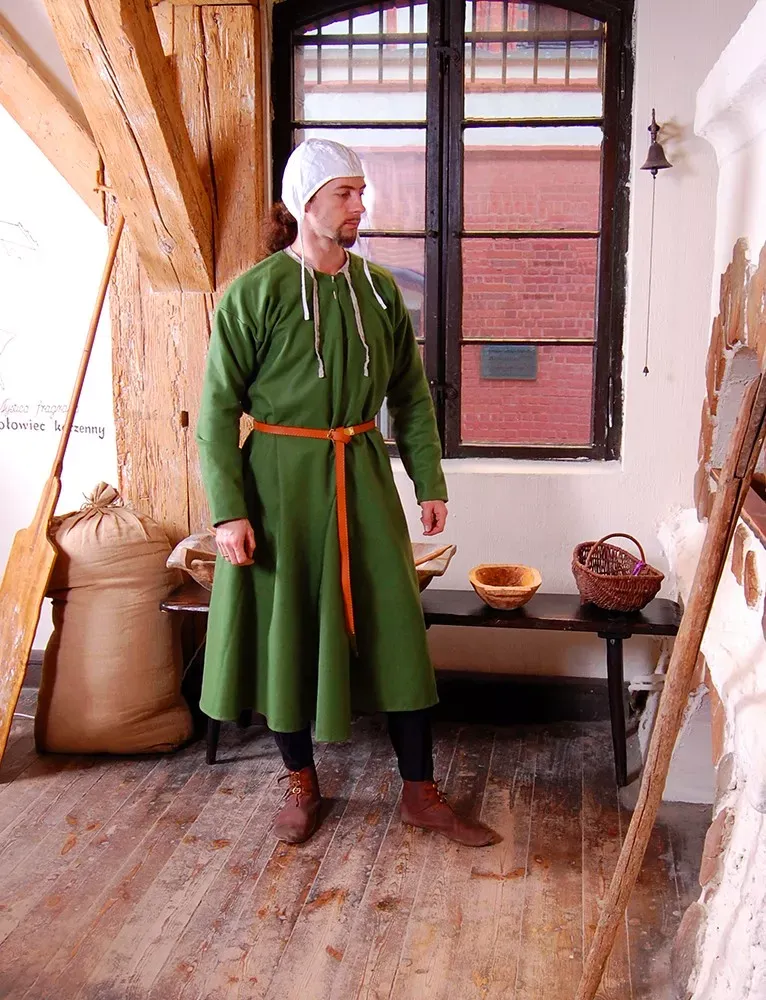
True medieval versions are extremely simple to make, even for MYOG novices. If you wanted a tunic that covers down to your knees (sans hood), you'd only need 3 yards of 60" wide material. That could be 0.93 OSY Silpoly, 0.77 OSY MTN Silnylon, or even 0.51 OSY DCF. The approximate weights of those tunics would be >117 grams (0.93 OSY Membrane Silpoly) down to >64 grams (0.51 OSY DCF.) I say "less than" because it is unlikely you'll want the side gores (pieces 5, 6, 7, &8 from the pattern,) and you will probably want to decrease the width of the base gores (3&4) to suit your measurements.
Medieval tunics don't have hoods, the sleeve are straight cuts, they don't have pit zips, and they aren't tailored at all. What if you wanted those refinements? I wish I could provide you a pattern for a hooded/fitted/refined rain tunic, but I don't have one. I'd recommend starting with a good pullover jacket pattern, lengthen it, then add the gores to the front and back. I paid to have this done for me as my MYOG skills are not high enough. In fact, I even went as far as to have custom-printed material made. Because I'm vain.
My Tunic
I contracted with Timmermade to have my tunic built. I provided Dan the garment shown below to pattern off of. I asked to make the skirt longer (so it went down to my knees), and eliminate the side gores. (I didn't need/want as full of a skirt.) I asked to have pit zips under the arms, and to have his UL hood design added. He recommended 1.1 OSY silpoly. I splurged and got it custom printed with a fall maple leaf motif by Ripstop By The Roll.
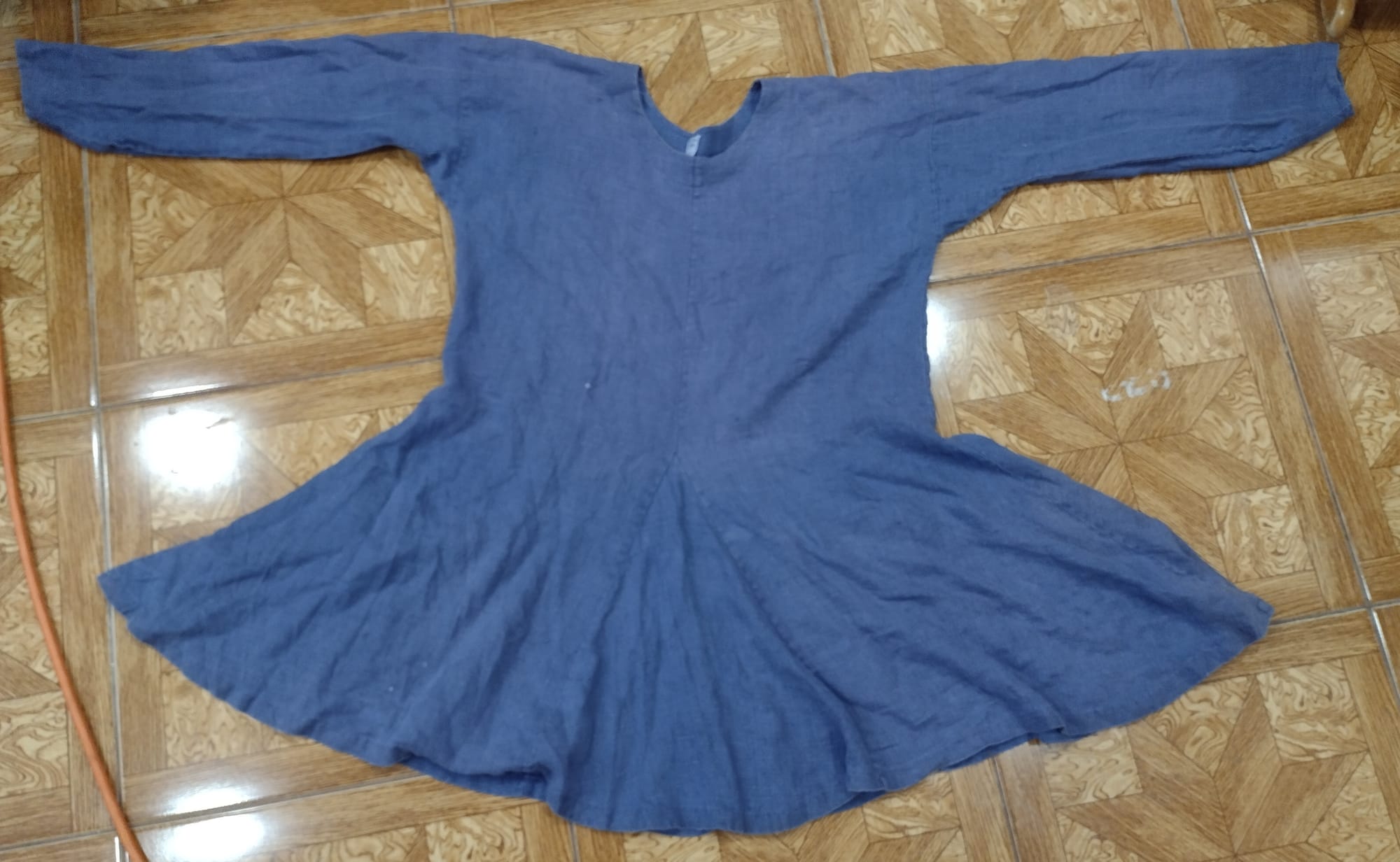
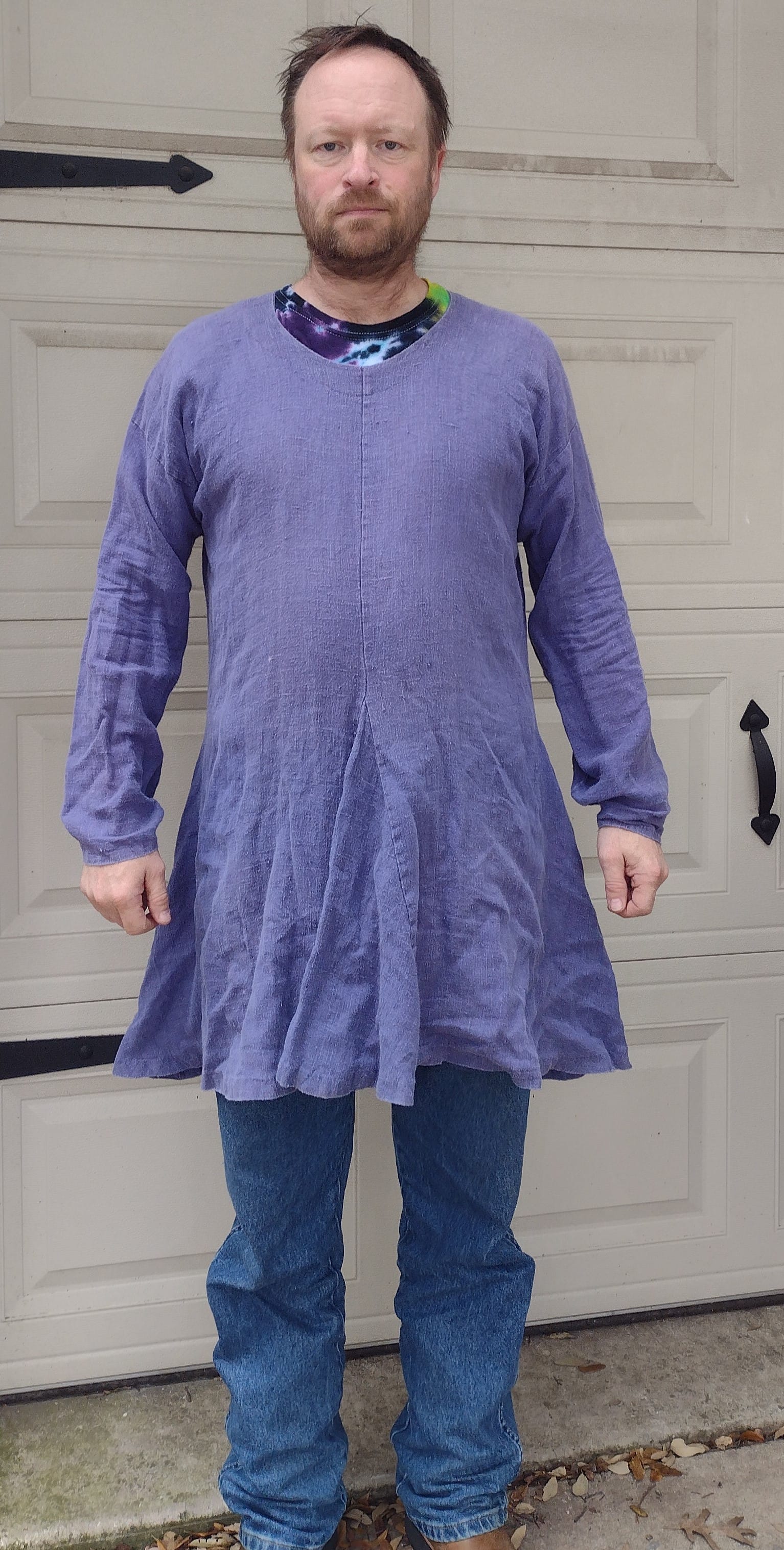
Dan got the concept correct, but the skirt length wrong. When it came in, it was mid– thigh, like the garment I sent him, but not extended like I asked.
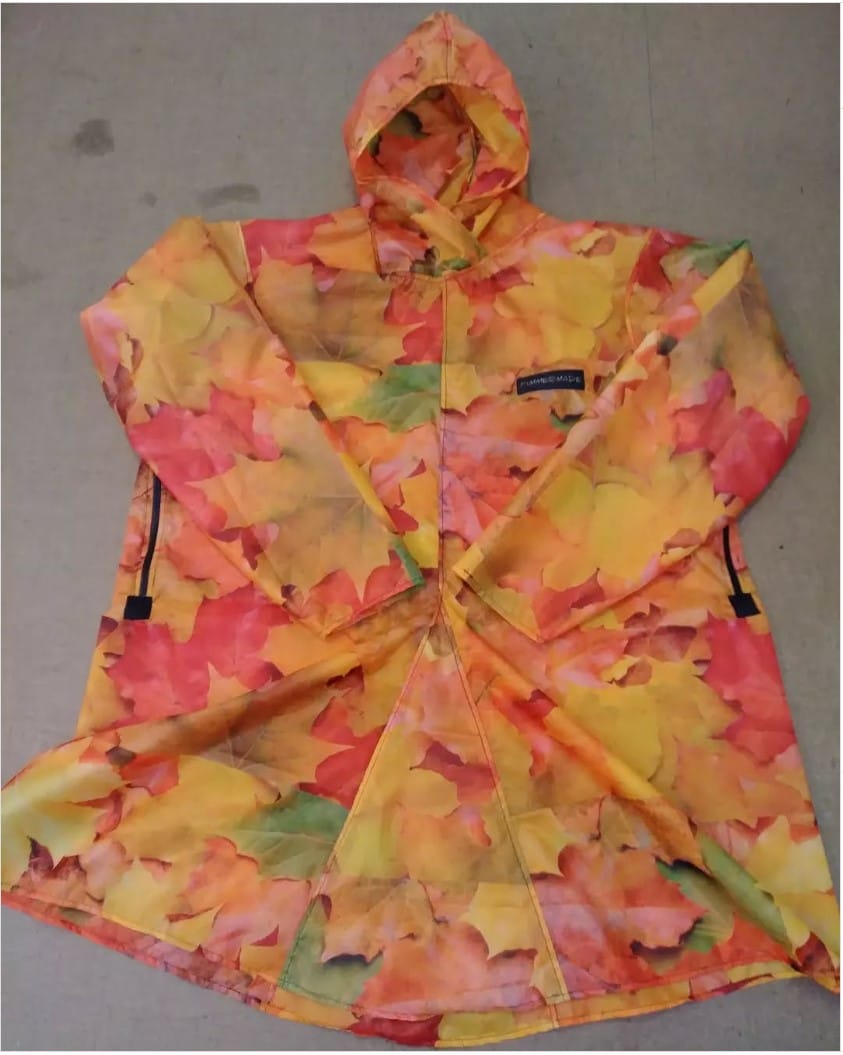
So I ordered some 0.93 OSY Membrane Silpoly with the same motif and negotiated with a friend of mine (a seamstress) to have an extension put on it, resulting in what' I've got now. I seam sealed everything from the inside. Total finished garment weight = 147.8 grams.
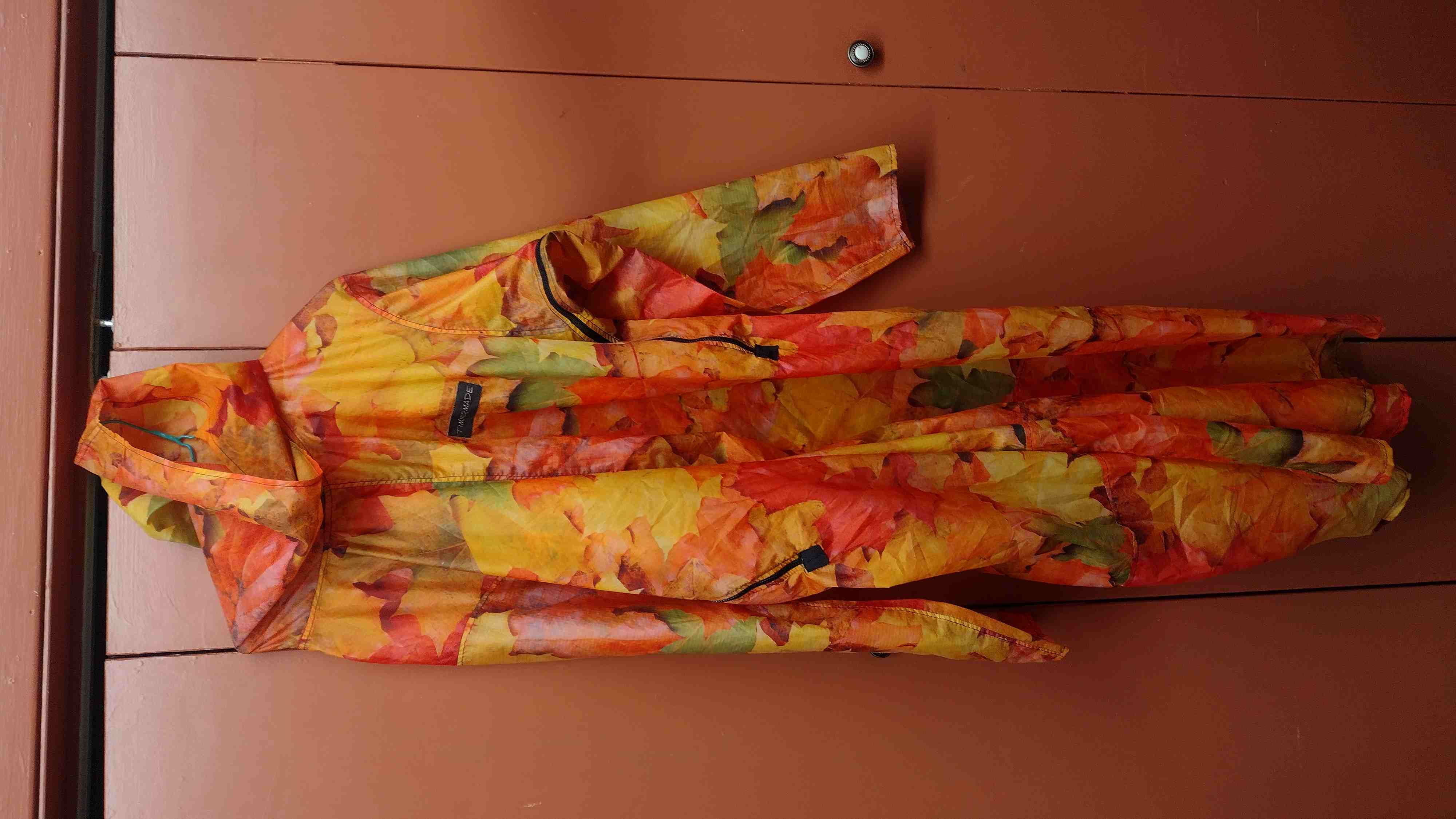
Review
My first use of the tunic was on the Troop 485 50-miler over Thanksgiving week in 2022. Day 2 of that adventure was in the mid 40s, and we had an all-day soaking rain. I had not yet added the skirt extension. Also, I had not yet seam-sealed it. That day motivated me to make those 2 changes. Simply put, I froze my nads off. I've used it a number of times since those improvements, but I haven't faced a repeat of the 45-degree conditions.
My second use was over Memorial Day weekend in 2023 at Big Bend National park where I got caught in a thunderstorm. My third use was on the Philmont trek in June/July 2023 where I got caught in another thunderstorm as well as a passing light shower. My fourth use was the Appalachian Trail trip in 2023, but it didn't rain. The fifth use was the Ouachita Trail trip in November/December 2024, but I only faced one passing shower.
So the jury is still out on it.
If I were to make it again, what would I change?
#1: I'd swap the 1.1 OSY silpoly to 0.93 OSY Membrane silpoly. By my calculations/estimates, that should save 12.7 grams off the total weight (9.7% of the total garment weight.)
#2: The zippers. Dan used 18" of YKK #5 zipper for the pit zips. Dan recommended this zipper because of it's ruggedness/durability. It certainly is durable/rugged. But #5 YKK is 6 grams/foot. My Enlightened Equipment Copperfield wind shirt uses a YKK #3 zipper, at 3 grams/foot, and it seems sufficiently durable/rugged. By subbing out I could save 9 grams, or an additional 6.8%.
These two changes would save 21.9 grams (16.5%), making the "what if" tunic 109.1 grams, or an incredible 3.9 ounces.
Alternatively, maybe "spend" some of this weight savings on longer pit zips, or adding a short section of zip to the chest portion. Both would help improve ventilation.
And if I wanted to go all out and switch to DCF, with the 18" pit zips in #3 YKK, I estimate it would end up at 64 grams (2.28 ounces)
Hike on my friends
